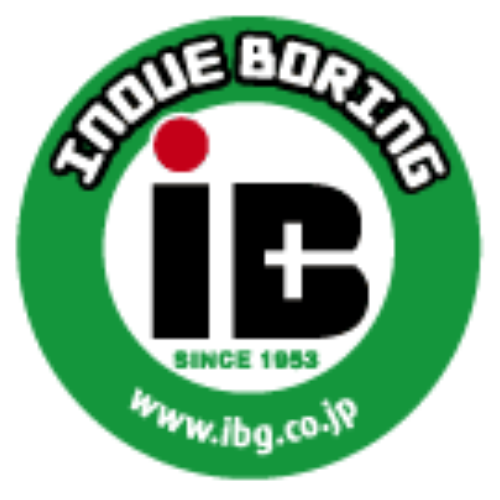The History of the Cylinder – How EVER SLEEVE™︎ Brought Seizure-Resistant Cylinders Into the Modern Era
Share
Tracing the evolution of the engine through its most vital component — the cylinder.

Introduction
In this article, we look back at the long history of the engine through a single lens:
the evolution of its cylinder — the beating heart of every combustion engine.
From the early cast-iron designs to today’s advanced seizure-resistant cylinders,
this journey tells not only the story of materials and technology,
but also of human ingenuity — and the spirit that led to iB’s creation of the EVER SLEEVE™︎.
- The Beginning: The Age of Cast-Iron Cylinders


The first mass-produced cylinders in engine history were made of cast iron.
Its excellent machinability and ease of mass production made it the obvious choice.
From the dawn of the internal combustion engine until roughly the 1960s,
virtually all engines relied on cast-iron cylinders.
However, cast iron had one critical drawback: weight.
For motorcycles, lighter weight directly translates into better acceleration, handling, and fuel economy.
And when considering heat dissipation, aluminum clearly offered superior potential.
It was only natural that the next generation of engines would move toward aluminum castings.
2. Aluminum Arrives: Lighter and Faster

As aluminum began replacing steel and iron in motorcycle components — eventually even in frames —
engine builders sought to make cylinders lighter too.
However, aluminum alone could not withstand the extreme friction and heat of the inner bore surface.
Thus, the solution was a hybrid cylinder: an aluminum casting fitted with a cast-iron sleeve
to handle the sliding surface between the piston and bore.
This aluminum + cast-iron sleeve structure emerged in the 1960s
and became mainstream through the 1970s, especially in high-performance motorcycles.
Even Harley-Davidson, which valued torque over speed, continued using full cast-iron cylinders until the 1980s.
When the Evolution engine debuted in 1984, Harley finally adopted the aluminum cylinder with a cast-iron sleeve —
marking a major technological shift.
3. The Birth of the All-Aluminum Cylinder

As plating technologies advanced, it became possible to apply super-hard nickel–silicon carbide coatings
directly onto the inner surface of aluminum.
This breakthrough gave birth to the all-aluminum cylinder,
whose bore was protected by an ultra-hard, thin plating layer rather than a heavy sleeve.
The first to adopt this were Japanese two-stroke racing engines in the late 1980s —
where the need for seizure-resistant cylinders was greatest.
Racing demanded the ultimate in heat transfer, weight reduction, and low friction.
As these race-proven designs spread to production motorcycles,
the technology matured and became the global standard.
Today, nearly every modern motorcycle engine uses this plated all-aluminum cylinder system.
As many of our readers know, iB played a vital role in this very era of cylinder production.
In short, the history of motorcycle cylinders is the history of aluminum evolution.
4. EVER SLEEVE™︎ Pat. — Advancing the Cylinder by an Entire Generation

The innovation of EVER SLEEVE™︎ represents nothing less than a leap forward in this historical timeline.
It allows mid-era engines — those built with cast-iron sleeves —
to be modernized into the performance and reliability of today’s all-aluminum engines.
We have often discussed the weaknesses of cast-iron sleeves
and the many advantages of aluminum-plated bores.
But if we were to summarize it in one line, it would be this:
The EVER SLEEVE™︎ and the ICBM™︎ method are technologies that modernize a cylinder —
advancing it by an entire generation.
5. The Spirit Behind the Technology

The creation of EVER SLEEVE™︎ was not born from theory alone.
It was driven by the passion of iB’s engineers —
their desire to preserve vintage engines and give them a second life.
“We wanted to create a cylinder that would not wear out —
a truly seizure-resistant cylinder for classic engines.”
That spirit led to the fusion of iB’s traditional precision honing
and modern material science — resulting in a technology that both honors the past
and extends the future of mechanical heritage.
FAQ – Frequently Asked Questions
Q1. Do you offer replating without using sleeves?
Yes. Applicable models are limited because dedicated jigs are required, but we can perform direct replating on the following:
- HONDA: NSR250R, RS125 / RS250R, CR80 / 85 / 125 / 250R, CRM250
- YAMAHA: TZR250 (3XV / 3MA)
- KAWASAKI: KDX125 / 200 / 250
- SUZUKI: RG250Γ
For other models, please contact us.
Q2. Can ICBM™︎ be applied to Harley-Davidson cast-iron cylinders (e.g., Shovelhead)?
Yes. We can apply our ICBM™︎ process directly without using a sleeve, even on cast-iron cylinders such as Shovelheads.
Q3. Is it true that plating can peel off?
No. Japanese plating technology is exceptionally robust; plating separation does not occur in our process. The durability of ICBM™︎andEVER SLEEVE™︎ cylinders is outstanding—far beyond ordinary standards.
EVER SLEEVE™︎ will not rust even if it is immersed directly in seawater!
